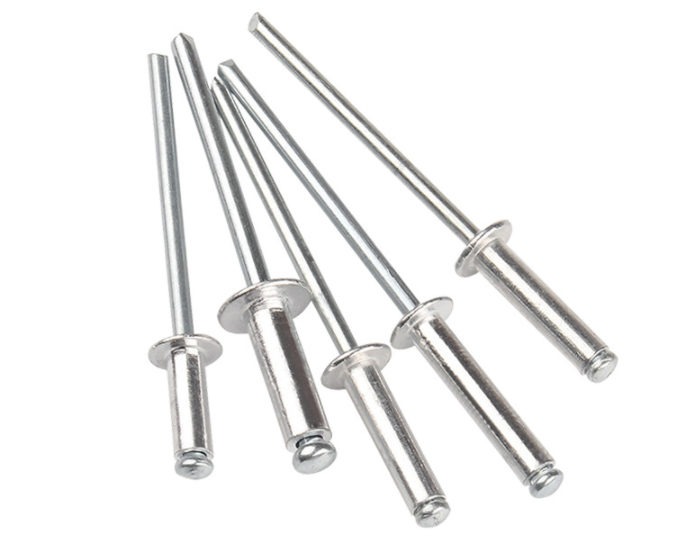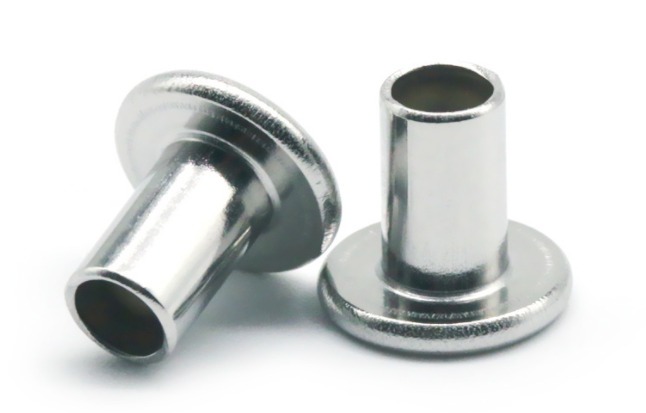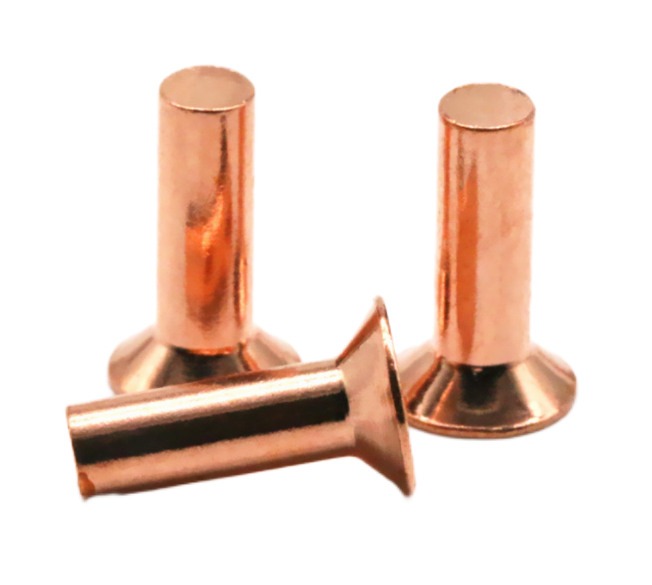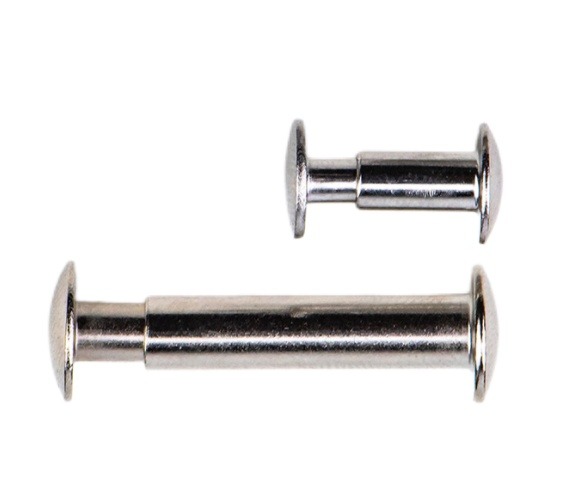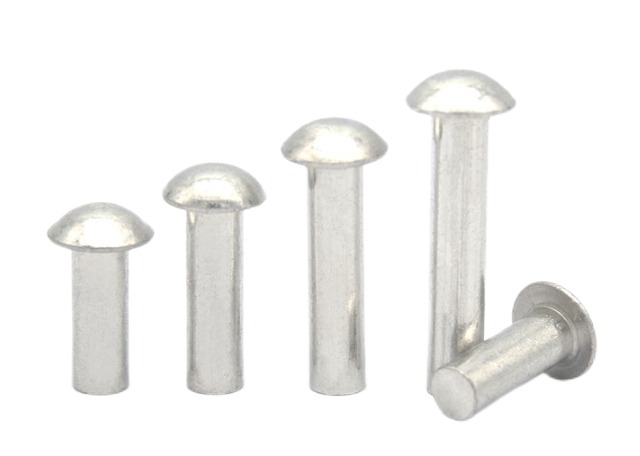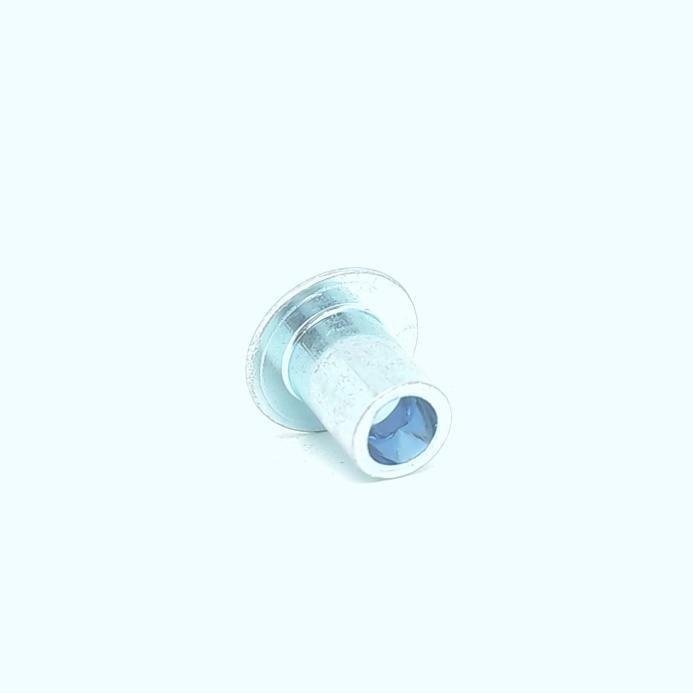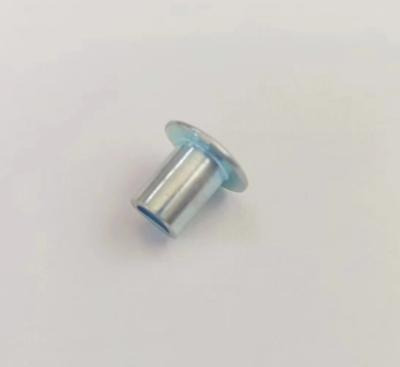Threaded Rivet Nuts vs. Threaded Rivet Inserts: Are They Really Different?
The world of fasteners can be a complex one, especially when terms are used interchangeably or with slight variations. This can be the case with threaded rivet nuts and threaded rivet inserts. While they often seem to describe the same thing, a closer look reveals a subtle difference in terminology. This article aims to clarify the distinction between these terms and provide a comprehensive understanding of these versatile fasteners.
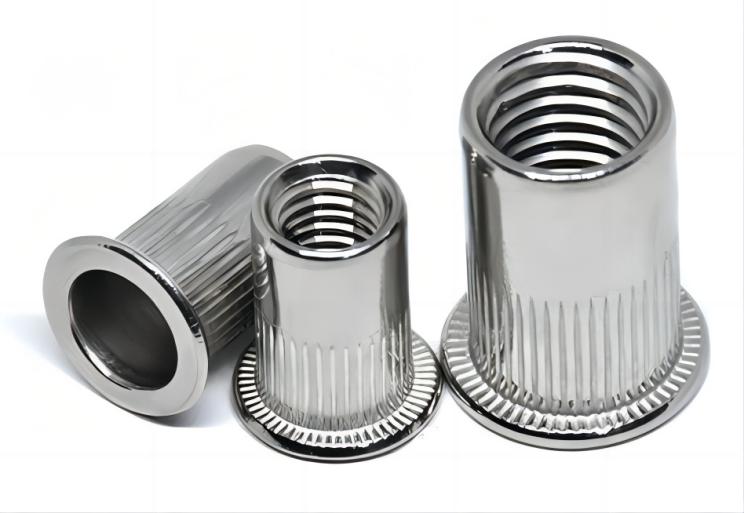
What Are Threaded Rivet Nuts?
A threaded rivet nut, also commonly known as a rivnut or blind nut, is a one-piece fastener designed to create a strong, threaded connection in thin or inaccessible materials. It consists of a tubular body with internal threads and a mandrel (central pin) running through its center. The mandrel itself has a specific mechanism, typically a break-neck or break-stem design, that allows for installation from just one side of the material.
Here’s a breakdown of the key characteristics of a threaded rivet nut:
- One-piece design: Unlike traditional nuts and bolts requiring separate components, a rivet nut is a single unit, simplifying assembly and reducing the risk of losing parts.
- Internal threads: The core feature of the rivet nut is the presence of internal threads that accept screws, bolts, or other threaded fasteners. This allows for the creation of a strong, reusable threaded connection in the material.
- Single-sided installation: Perhaps the most advantageous feature of the rivet nut is its ability to be installed from just one side of the workpiece. This makes it ideal for applications where access to the backside is limited or impossible, such as within hollow sections or behind panels.
The applications of threaded rivet nuts are extensive. They are commonly used in:
- Sheet metal fabrication: Rivet nuts provide a strong and reliable way to create threaded attachment points in thin sheet metal, allowing for the attachment of other components or the assembly of structures.
- Electronics and appliances: They are frequently used in electronics enclosures and appliance housings to create threaded mounting points for components, switches, and other hardware.
- Furniture assembly: Rivet nuts offer a clean and secure way to assemble furniture components, especially when access to both sides is limited.
- Automotive and aerospace industries: Due to their lightweight construction and single-sided installation, rivet nuts find applications in various automotive and aerospace components.
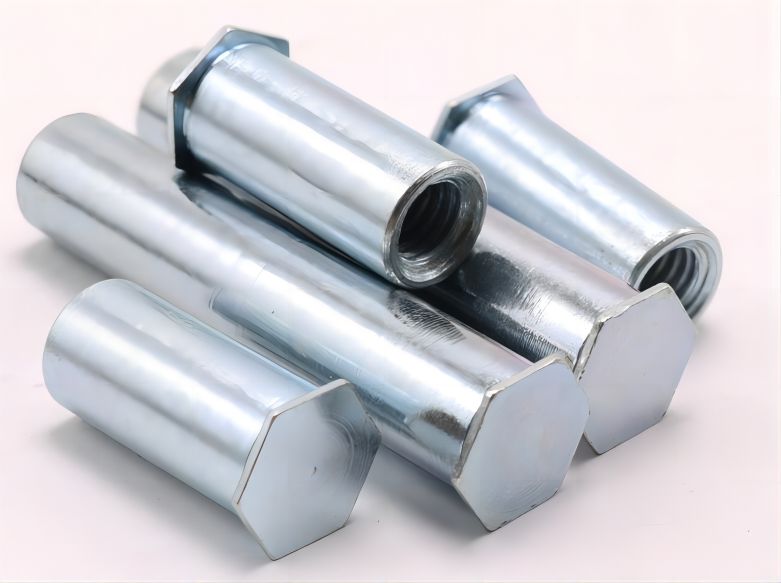
What are Threaded Rivet Inserts?
The “threaded rivet insert” can cause some confusion because it has two potential interpretations:
- Internal Threads of the Rivet Nut: In some less frequent situations, “threaded rivet insert” might specifically refer only to the internal threaded section of the threaded rivet nut itself. This usage is not very common and can potentially lead to misunderstandings. It’s important to remember that the threaded portion is an integral part of the entire rivet nut, not a separate component.
- Separate Rivet Insert (Uncommon): It’s important to acknowledge that there might be some rare types of rivet inserts that are separate components from the nut itself. These separate inserts would have a different installation method compared to the standard one-piece threaded rivet nut. However, for all practical purposes when discussing fasteners, “threaded rivet insert” either refers to the internal threaded portion of the rivet nut itself or is simply used interchangeably with the more common term “threaded rivet nut.”
Here’s a breakdown for clarity:
- Common Usage: In most practical scenarios, “threaded rivet insert” and “threaded rivet nut” describe the same exact element – the one-piece fastener with internal threads for single-sided installation.
- Less Common Usage: “Threaded rivet insert” might occasionally refer only to the internal threads of the rivet nut, but this is not the preferred term.
- Rare Case: There’s a slight possibility of encountering separate rivet insert components requiring a different installation method, but this is uncommon in everyday fastener applications.
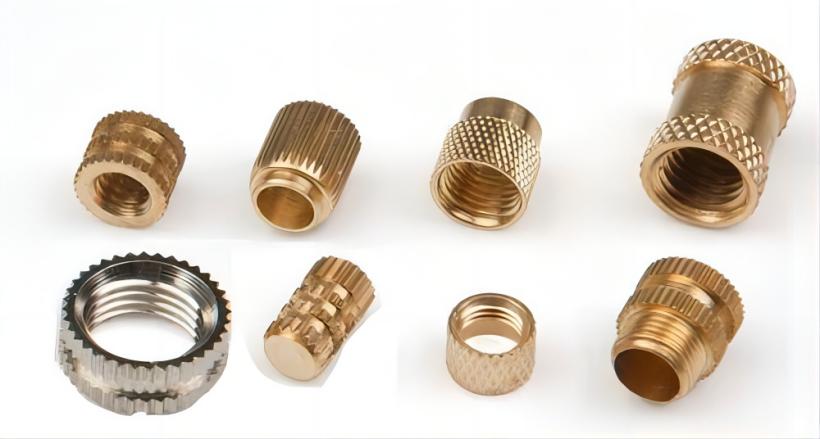
Are They Really Different?
In most practical scenarios, the terms “threaded rivet nut” and “threaded rivet insert” can be used interchangeably. When referring to the one-piece fastener with internal threads and single-sided installation, both terms describe the same functional element. The key takeaway is that “threaded rivet nut” is the more widely used and accurate term for the entire fastener.
Beyond the Terminology: Exploring Threaded Rivet Nuts
Understanding threaded rivet nuts goes beyond just their names. Here’s a deeper dive into these versatile fasteners, exploring their variations and installation process:
1. Types of Threaded Rivet Nuts:
Threaded rivet nuts come in a variety of configurations to cater to specific applications. These variations encompass three main aspects:
a. Head Styles: The head style refers to the shape of the top end of the rivet nut. Common options include:
- Open head: Provides a flush finish on the accessible side.
- Closed head: Creates a completely sealed attachment point.
- Flanged head: Offers increased bearing surface and distribute the load more evenly.
b. Body Styles: The body style describes the overall shape of the rivet nut’s main body. Two main types exist:
- Open body: Allows for the threaded insert to accept screws or bolts of varying lengths.
- Closed-end body: Provides a sealed enclosure for the threads, ideal for applications requiring protection from external elements.
c. Material Options: Threaded rivet nuts are available in various materials to suit different strength and environmental requirements. Common materials include:
- Steel: Offers high strength and affordability, suitable for general-purpose applications.
- Aluminum: Provides a lightweight option with good corrosion resistance.
- Stainless Steel: Combines high strength with excellent corrosion resistance, ideal for demanding environments.
2. Installation Process
Installing a threaded rivet nut involves a straightforward process:
- Drilling: Prepare the material by drilling a hole with a specific diameter based on the chosen rivet nut size. Refer to the manufacturer’s recommendations for the exact hole size.
- Insertion: Insert the rivet nut into the drilled hole, ensuring the mandrel (central pin) faces the accessible side of the material.
- Setting: Use a dedicated rivet nut setting tool. This tool grips the mandrel and applies pulling force. As the mandrel is pulled, it expands the body of the rivet nut, creating a tight grip within the material. The pulling force also breaks a predetermined weak point in the mandrel, separating it from the body and leaving a permanent threaded insert in place.
By understanding these different types and the installation process, you can effectively select and use threaded rivet nuts for your specific fastening needs.
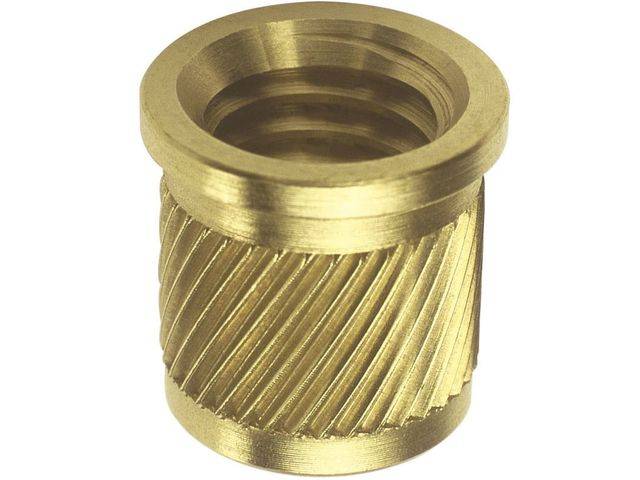
Conclusion
Threaded rivet nuts, also commonly known as rivnuts or blind nuts, are a valuable addition to any fastener toolbox. Their single-sided installation capability and ability to create strong, reusable threaded connections make them ideal for various applications. While the term “threaded rivet insert” might be used occasionally, “threaded rivet nut” is the more accurate and widely used term for this single-piece fastener.

